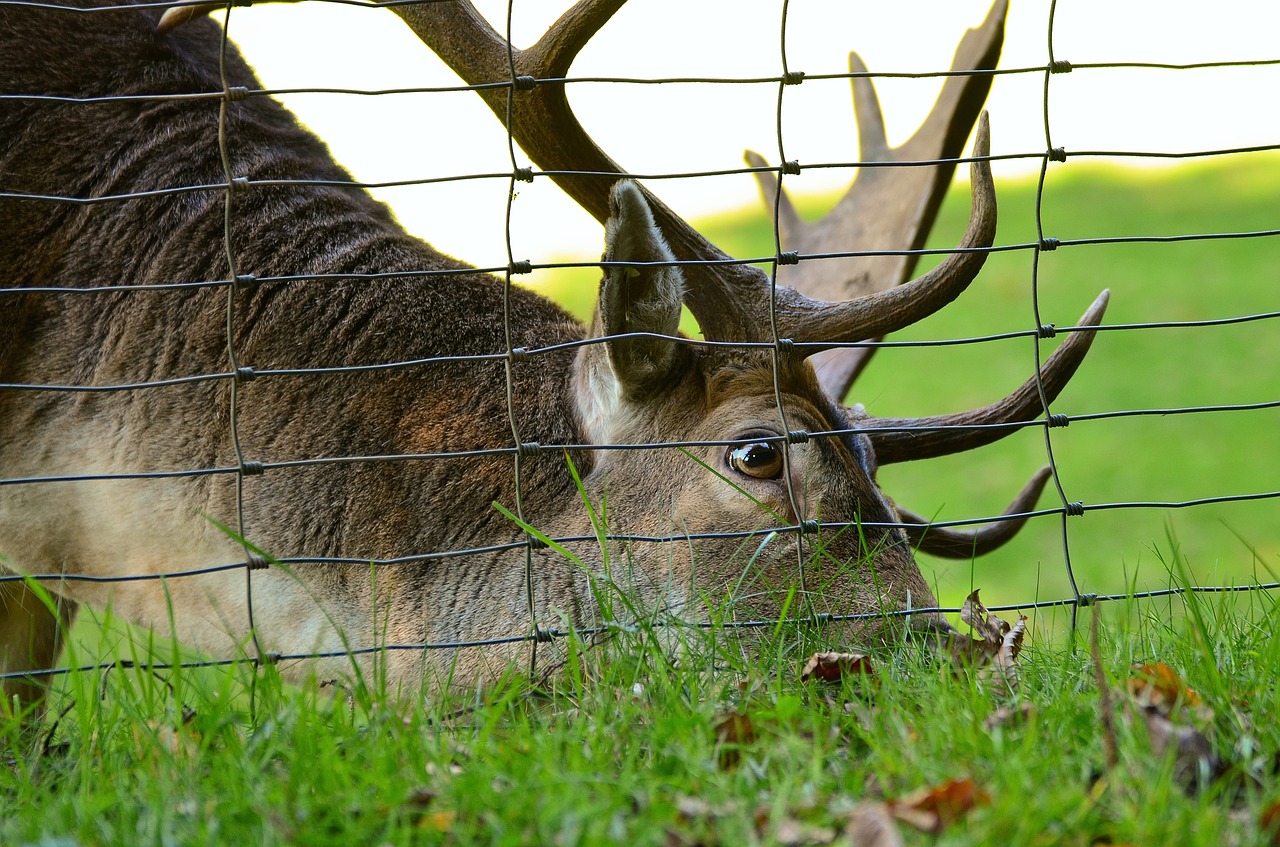DEER WELFARE AND FENCING
The British Deer Society exists to educate and inspire everyone about deer in their environment.
The BDS also works to raise awareness on deer welfare issues and hazards in the UK.
Inadequately managed fencing can cause issues for deer and other wildlife.
Read more: Fencing hazards to deer
HELP! I HAVE FOUND A DEER STUCK IN A FENCE. WHAT SHOULD I DO?
Deer sometimes become stuck or caught in netting, wire fences, hanging rope or other structures and are unable to extricate themselves without assistance. This can not only be extremely stressful for the deer but also for you, the person who discovers them.
What should you do in this situation?
Give them as precise a location as you can. We recommend using What3Words.
WHY DO YOU NEED TO CALL FOR HELP WHEN A DEER IS CAUGHT IN FENCING?

1) THIS IS WHAT IS BEST AND SAFEST FOR YOU!
Handling and restraining a live deer can be extremely dangerous because of flailing antlers or sharp hooves and should only be attempted by experienced and trained people. Even smaller deer such as roe or muntjac can prove far stronger than expected and have been known to seriously injure members of the public who have attempted to help them.
For this reason, you are advised not to attempt to help the deer yourself.
Please get help from a professional agency such as the RSPCA or other wildlife rescue organisation, a local farm, veterinary practice, or even the Fire Brigade if appropriate to the circumstances. Other countryside professionals such as gamekeepers or farm stockmen might also be able to provide a suitable source of assistance.

2) THIS IS WHAT IS THE LEAST STRESSFUL & SAFEST FOR THE DEER!
Put yourself in the deer’s hooves. Wouldn’t you prefer someone to help you who that knows what they’re doing? Someone who knows how to best keep you calm, has the correct equipment to deal with the situation and who has the experience to recognise if you have a very serious injury or need additional care?
Calling for professional help is putting both the deer’s welfare and your welfare first.
While waiting for professional help and any necessary equipment or tools to arrive it is best to stay back, preferably out of sight. If you remain too close it might cause the deer to struggle further. This might cause a new injury or make an existing one worse and will very likely make the deer even more stressed than it was before.
You can help in the meantime by asking other members of the public who might be passing to also keep their distance and be quiet as possible.
WHAT MIGHT HAPPEN TO THE DEER STUCK IN A FENCE ONCE HELP ARRIVES?

In many cases sedation may be necessary.
This requires appropriate skills and licensing for the drugs and the dart guns necessary to administer them from a distance. Attempting to blindfold an active or struggling animal to calm it down tends not to be advised as this may place the person involved in danger.
Fencing may need to be cut in order to free the deer.
Fences or similar ideally should not be cut or otherwise damaged without the landowner’s agreement first. Fencing that is left damaged or with holes in it that a landowner is not made aware of may cause welfare issues later for livestock and/or other deer and wildlife.
If the deer is already seriously injured, euthanasia may sadly be the only practical but kindest option.
A trained rescuer will be best placed to assess the situation and make an informed decision. Any deer that has failed to extricate itself from entanglement of body or limb is likely to have become metabolically exhausted trying to get out of the situation. This means that they are at very high risk of dying from myopathy hours or days after being released. A judgement must always be made before release is considered to avoid the risk of a stricken animal being allowed to depart in a condition that will eventually cause its demise anyway.
Not all deer can be released to the wild after rescue:
Under the Alien Species (Enforcement and Permitting) Order 2019, it may be illegal to release a muntjac that has been taken into possession back into the wild.
YOU CAN HELP SUPPORT DEER WELFARE
Sadly, deer getting stuck in fencing, caught in netting or similar is not uncommon.
We often see reports in the news, or videos on social media, of members of the public trying to help a deer stuck in a fence.
While we appreciate that caring people will go out of their way to help an animal in need, the best option – for both the deer and themselves is usually to call immediately for professional help.
Please help us to raise awareness about how everyone can help a deer stuck in fencing by sharing this information on your social media.
Together, we can make a difference for deer.
PLEASE HELP US TO KEEP EDUCATING & INSPIRING EVERYONE ABOUT DEER FOR FREE
If you have found our free resources about deer in the UK useful then we’d really appreciate your support in helping us keep them free for all! How can you support our work?











